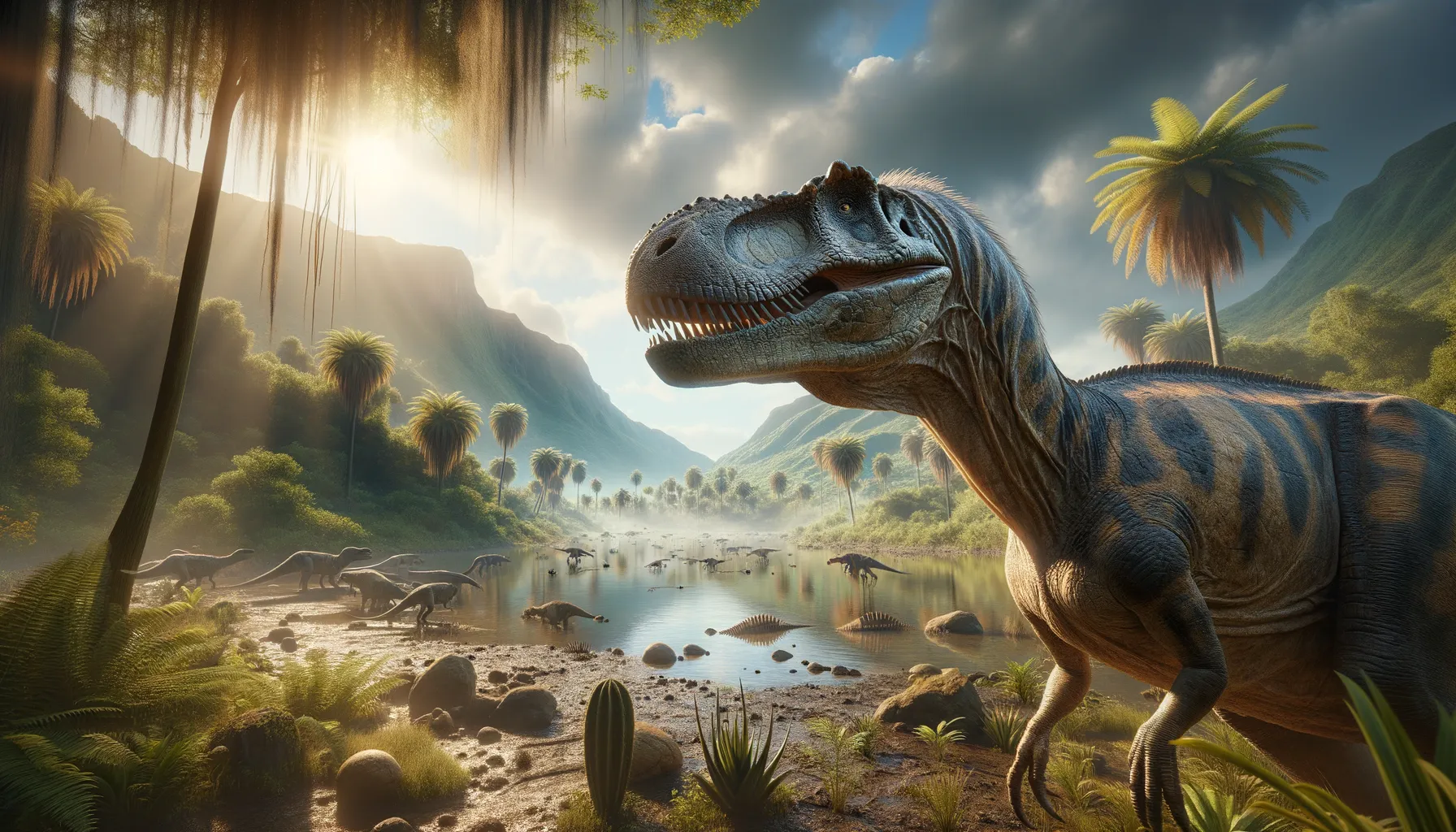
Abelisaurus
Fierce and Formidable Predator of the Past
Period
Cretaceous
Length
Roughly 7 to 9 meters long.
Height
Approximately 3 meters tall.
Weight
Around 1000 kilograms.
Abelisaurus is a notable carnivorous dinosaur from the Late Cretaceous period, primarily found in what is now South America. Its skull exhibits a distinctive shape with rugged texture, reflecting its powerful predatory nature. Thought to be a top predator in its ecosystem, Abelisaurus played a pivotal role in maintaining the balance of its environment. The dinosaur's fossils offer valuable insights into the diversity and adaptation of theropods during its time.
Diet
Abelisaurus was a carnivore, primarily feeding on other dinosaurs. It likely preyed on smaller herbivores, using its sharp teeth to capture and consume its meals.
Hunting
Abelisaurus likely relied on its size and agility to hunt, ambushing prey with quick bursts of speed. Its powerful jaws and teeth were well-suited to capturing and tearing flesh, making it an apex predator.
Environmental challenges
The Late Cretaceous environment posed various challenges, including competition with other large predators. Changing climates and sea levels could also have affected available prey and habitats. Abelisaurus needed to adapt to fluctuating ecosystems and possibly shifting food sources.
Speed
Moderate speed due to its bipedal nature.
Lifespan
Estimated around 20-30 years.
First discovery
Discovered in Argentina in 1983.
Fun Facts
- Abelisaurus was a carnivorous dinosaur that lived around 80 million years ago during the Late Cretaceous period.
- This dinosaur's name means 'Abel's lizard,' named after the Argentine paleontologist Roberto Abel, who discovered its fossils.
- Abelisaurus had a large skull but surprisingly small arms, similar to its distant relative, the famous Tyrannosaurus rex.
- It was a theropod, which means it walked on two legs and was a fearsome predator in its ecosystem.
- The only known fossil of Abelisaurus is a partial skull found in Patagonia, which means we still have much to learn about this dinosaur's full appearance.
- Abelisaurus belonged to a family of dinosaurs known as Abelisauridae, which were common in the southern continents of ancient Earth.
- Abelisaurus is often compared to its more famous relatives because of its unique body structure and ferocious nature.
Growth and Development
Abelisaurus likely hatched from eggs and went through several growth stages, with juveniles initially relying on smaller prey. As it matured, its physical strength and hunting skills developed, enabling it to tackle larger prey.
Habitat
Abelisaurus lived in diverse environments, including open plains and forests. These areas provided ample hunting grounds and shelter. Its presence in different habitats suggests a highly adaptable nature, capable of surviving varying conditions.
Interaction with other species
As a top predator, Abelisaurus would have had numerous interactions with prey species. Competition with other carnivores would influence its hunting strategies. The presence of herbivores shaped its hunting grounds and territories.
Natural lifespan
Abelisaurus likely lived up to around 30 years in the wild.
Reproduction
Abelisaurus reproduced by laying eggs, likely in nests. Parents may have guarded the eggs, ensuring their protection from predators. Hatchlings were vulnerable and needed close watch to reach maturity.
Social behaviour
Little is known about the social behavior of Abelisaurus, but it may have been solitary like many large predators. However, it might have formed loose groups for specific activities like hunting or raising young.
Fossil locations
Abelisaurus fossils have predominantly been unearthed in Argentina. These findings have provided significant information on the diversity of South American theropods. The fossils highlight the dinosaur's wide distribution across the continent during the Cretaceous.
